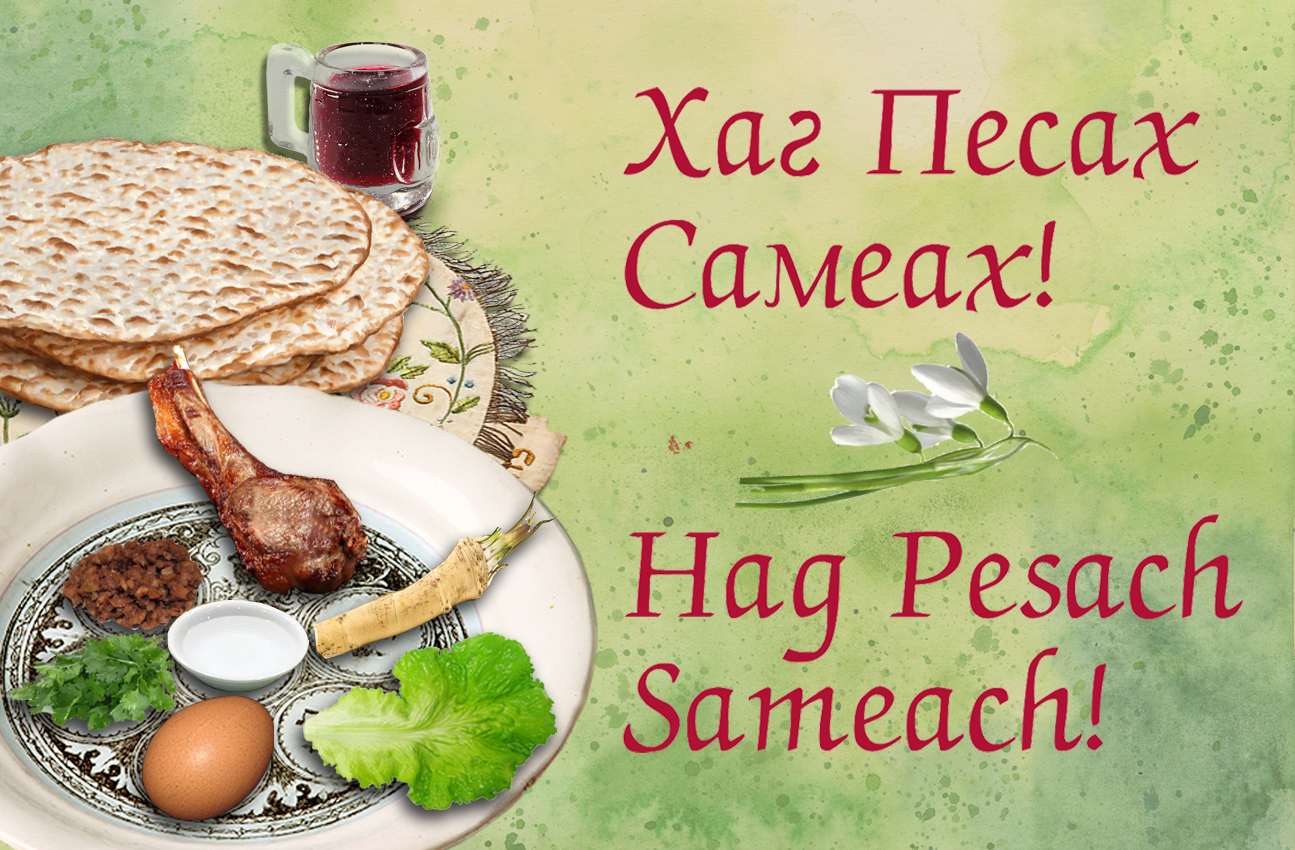


Hag Pesach Sameach!
Pesach, one of the most important Jewish holidays, commemorates the Exodus from Egypt. It is celebrated in the Hebrew month of Nisan (which falls in March-April) over the course of seven days in Israel, or usually eight days in the Diaspora. During the holiday it is forbidden to eat or possess leavened bread, as well as other grain products prepared with leaven or undergoing processes of fermentation. The Torah prescribes that matzah (unleavened bread) be eaten during these days. Jewish rabbinic tradition permits that only special dishes and cutlery, kept separately during the rest of the year, be used during this holiday.
The first day of Pesach is observed with a special feast known as the Seder Pesach (‘Passover order’). Those present read the Haggadah, a text recounting the story of the Exodus of Israel from Egypt. The Seder Pesach represents the most important ritual of the holiday and is intended to be conducted in a ceremonious and beauteous atmosphere. Consequently all items used in this rite not only meet particular functional needs, but are also endowed with aesthetic significance. The three compartments of the matzah cover symbolize the three parts of the Jewish people: the kohanim (priests), the Levites, and all the rest of Israel. These cloth pouches are often fabricated from expensive materials, with decorative embroidered images and biblical quotations related to Pesach. The special seder plate (ke‘arah), which holds the six required symbolic elements of the holiday feast, is also especially decorated.
One of the prescribed customs of the Pesach meal is the obligation to drink no less than four glasses of wine (or ‘fruit of the vine’), a stipulation that pertains even to children. Hence small cups are prepared for the children, with grape juice instead of wine. The necessity of observing specific food prohibitions during Pesach, together with the concomitant separation between everyday and Pesach ware, means that even the most utilitarian items used during the festival can come to represent unique mementos of past religious practices in the household. One such example on display in the Museum is a special jar for the Passover soup.
The counting of the Omer begins on the second day of Pesach and lasts for ‘seven full weeks’, or 49 days. Its completion is followed by the festival of Shavuot (Pentecost), which is observed in memory of the giving of the Torah on Mount Sinai at the time of the Exodus of Israel from Egypt. The counting of the Omer is facilitated by special tablets decorated with ornamental designs and biblical quotations.

